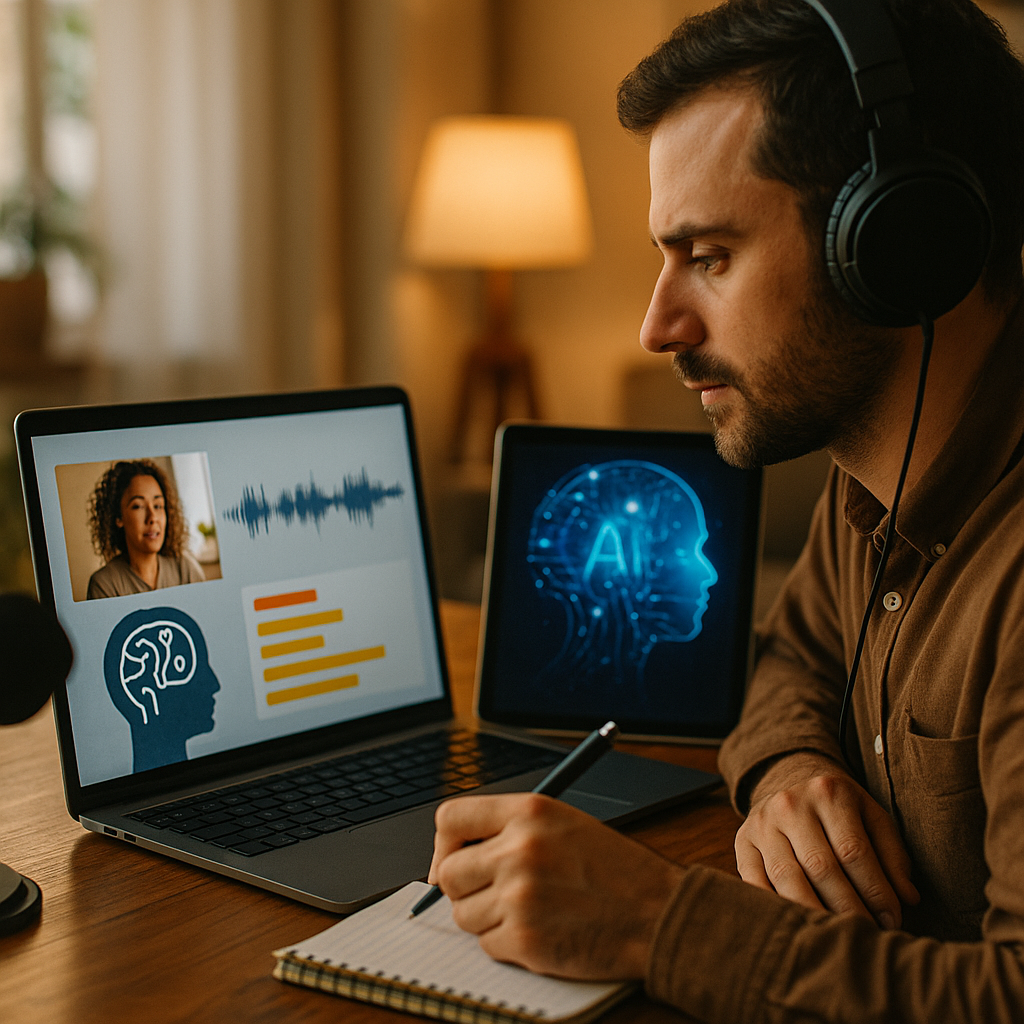As brands increasingly seek authentic creator partnerships, using AI to analyze the vocal tone and speaking cadence of creators for brand alignment has become a powerful asset. These advanced tools can unlock valuable audience insights and optimize collaboration outcomes. Discover how AI is transforming the way brands measure, select, and align with creative voices in today’s digital landscape.
The Critical Role of Vocal Tone in Creator-Brand Alignment
Vocal tone analysis has emerged as a vital tool for brands searching for the perfect spokesperson. In recent years, study after study confirms that audiences trust not just what creators say, but how they say it. For instance, a 2024 Statista survey found that 68% of consumers perceive brands as more trustworthy when creators’ vocal style matches their own expectations for the product or service.
Brands know that misalignment in vocal tone can weaken campaigns and erode trust. A creator with a high-energy, enthusiastic delivery might suit brands aiming for youthfulness, while a calm, authoritative voice better serves luxury or technical products. Brands are now leveraging AI-powered vocal tone tools to automatically assess these subtle but influential voice cues at scale, supporting more consistent and authentic relationships with audiences.
Speaking Cadence Analysis for Enhanced Audience Engagement
Speaking cadence—the rhythm, speed, and pattern of speech—affects how audiences comprehend and engage with messages. According to new research from the Digital Communication Institute (2025), a well-matched speaking cadence can boost listener retention by up to 32%. Conversely, a mismatch can lead to disengagement and negative brand perceptions.
AI solutions process audio content to identify unique cadence patterns in creators’ voices—such as rapid-fire delivery, dramatic pauses, or steady pacing. Brands match these patterns to their campaign personas and communication objectives. A fitness brand launching an energetic product, for example, benefits from creators whose quick, exuberant cadence evokes motivation. In contrast, wellness brands often choose voices that promote calm and reassurance.
Harnessing AI Audio Tools for Creator Selection
AI tools have grown increasingly sophisticated in analyzing both vocal tone and cadence for creator partnerships. By deploying algorithms trained on vast datasets of brand communications and audience reactions, organizations can:
- Objectively assess creators using acoustic fingerprinting and emotion recognition models
- Remove unconscious bias from selection processes, relying on data-driven insights
- Benchmark potential partners against established brand guidelines for voice and delivery
- Simulate audience responses to different creator voices before launch
These tools support a more informed, transparent creator selection process, reducing guesswork and ensuring a seamless brand fit.
Impact of Voice Analysis on Influencer Marketing Campaigns
Using AI for vocal tone and cadence analysis goes beyond initial creator selection. It actively shapes campaign design, implementation, and refinement. Brands can use AI analytics to:
- Customize scripts that align with a creator’s natural style for greater authenticity
- Monitor campaign voice consistency across social and digital channels
- Tune performance in real-time by analyzing how voice changes affect engagement rates
- Gather post-campaign insights on vocal elements that resonated with audiences
This granular level of voice analysis empowers marketers to make smarter adjustments, maximizing ROI and deepening creator-brand trust over time. It also makes the process scalable: large organizations can vet hundreds of creator partnerships with ease and objectivity.
Ethical Considerations and Best Practices in AI-Based Voice Analytics
While AI voice analysis brings efficiency and insight, brands must balance its power with ethical responsibility. Here’s how leading organizations apply EEAT (Experience, Expertise, Authoritativeness, Trustworthiness) principles:
- Consent and transparency: Brands should inform creators how audio will be used and analyzed.
- Data privacy: All recordings must be securely stored and handled according to data protection laws.
- Explainability: AI-driven recommendations should be comprehensible—not black boxes—to support clear decision-making.
- Inclusivity: Voice analytics must avoid bias against accents, speech disabilities, or culturally diverse delivery styles.
Applying these best practices fosters trust and encourages long-term partnerships between brands and creators, ensuring technology augments—rather than overrides—the human element in collaboration.
Future Trends in AI Voice Analysis for Brand Partnerships
AI voice technology is evolving rapidly. In 2025, expect tools that can:
- Analyze video and live stream audio in real-time for instant brand fit assessments
- Deliver personalized coaching to creators to align their vocal delivery with campaign goals—without losing authenticity
- Map predictive voice analytics to forecast campaign outcomes before significant investment
- Integrate with social listening tools for a 360-degree analysis of voice and audience sentiment
As AI continues to close the gap between brand vision and creator execution, those who harness its full potential will lead the field in influencer marketing effectiveness.
Frequently Asked Questions
-
How does AI analyze a creator’s vocal tone and cadence?
AI tools process audio recordings using natural language processing and acoustic analysis. They detect emotional cues, speech speed, rhythm, pauses, and pitch changes, mapping these features to brand requirements and audience data.
-
Can AI eliminate bias in creator selection?
AI can reduce unconscious human bias, but it’s crucial to use diverse training data and maintain oversight to ensure fair, inclusive results. Responsible brands monitor algorithms to avoid perpetuating stereotypes.
-
Is creator consent required for AI voice analysis?
Yes, ethical brands always obtain informed consent from creators before analyzing their voice any AI platform. This builds trust and aligns with data privacy regulations.
-
What industries benefit most from AI voice analytics?
Brands in fashion, beauty, fitness, tech, and finance increasingly use AI voice analysis for authenticity and engagement. Any sector relying on influencer marketing can benefit from improved brand-creator alignment.
-
Can AI provide real-time feedback during campaigns?
In 2025, leading platforms offer real-time analytic dashboards that track voice consistency and audience response, enabling brands and creators to adapt campaign strategies on the fly.
In summary, using AI to analyze the vocal tone and speaking cadence of creators enables brands to deliver genuine, resonant campaigns. By responsibly leveraging these powerful tools, marketers can foster lasting audience trust, strengthen influencer collaborations, and drive measurable brand growth in a competitive digital ecosystem.
